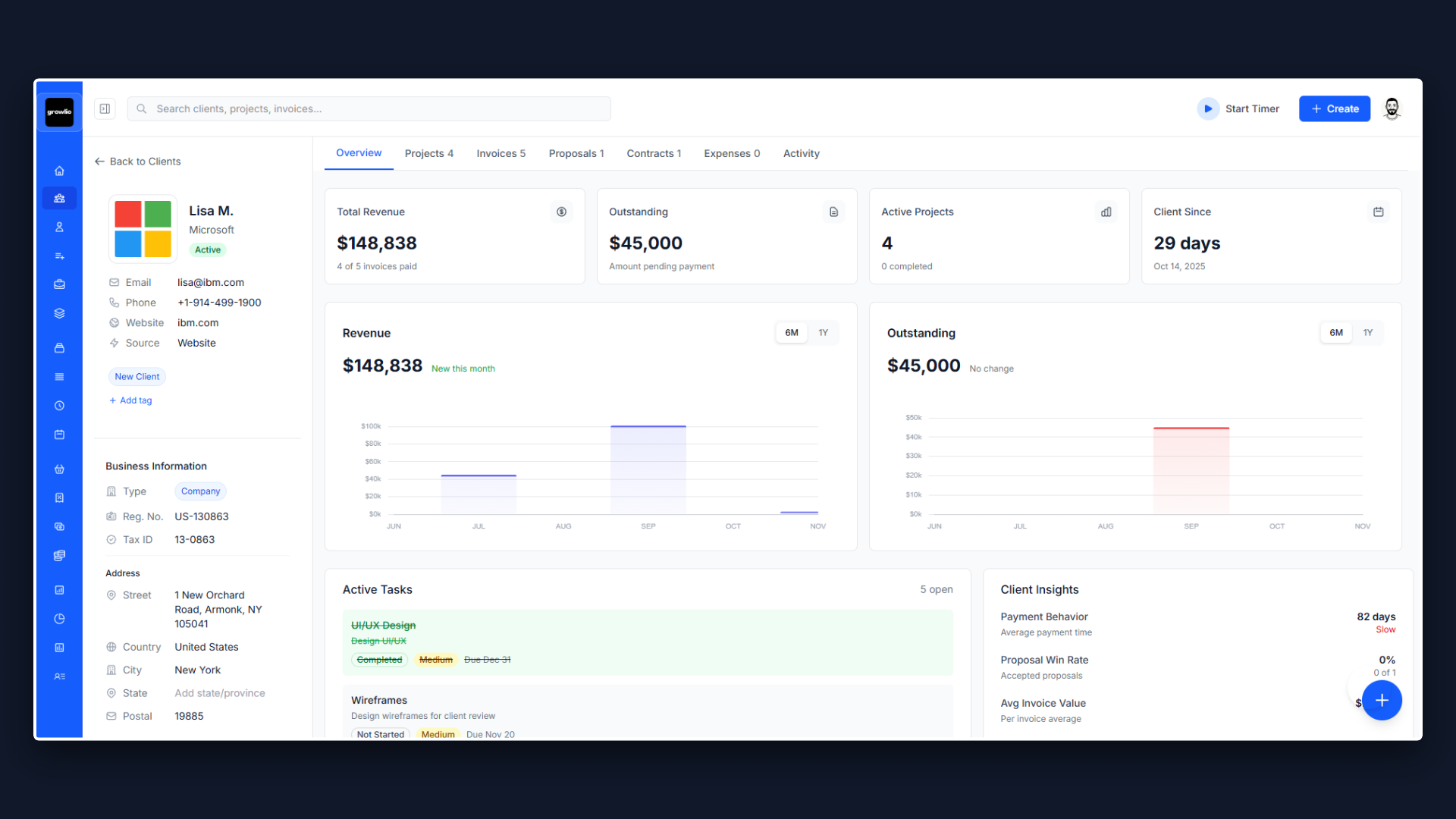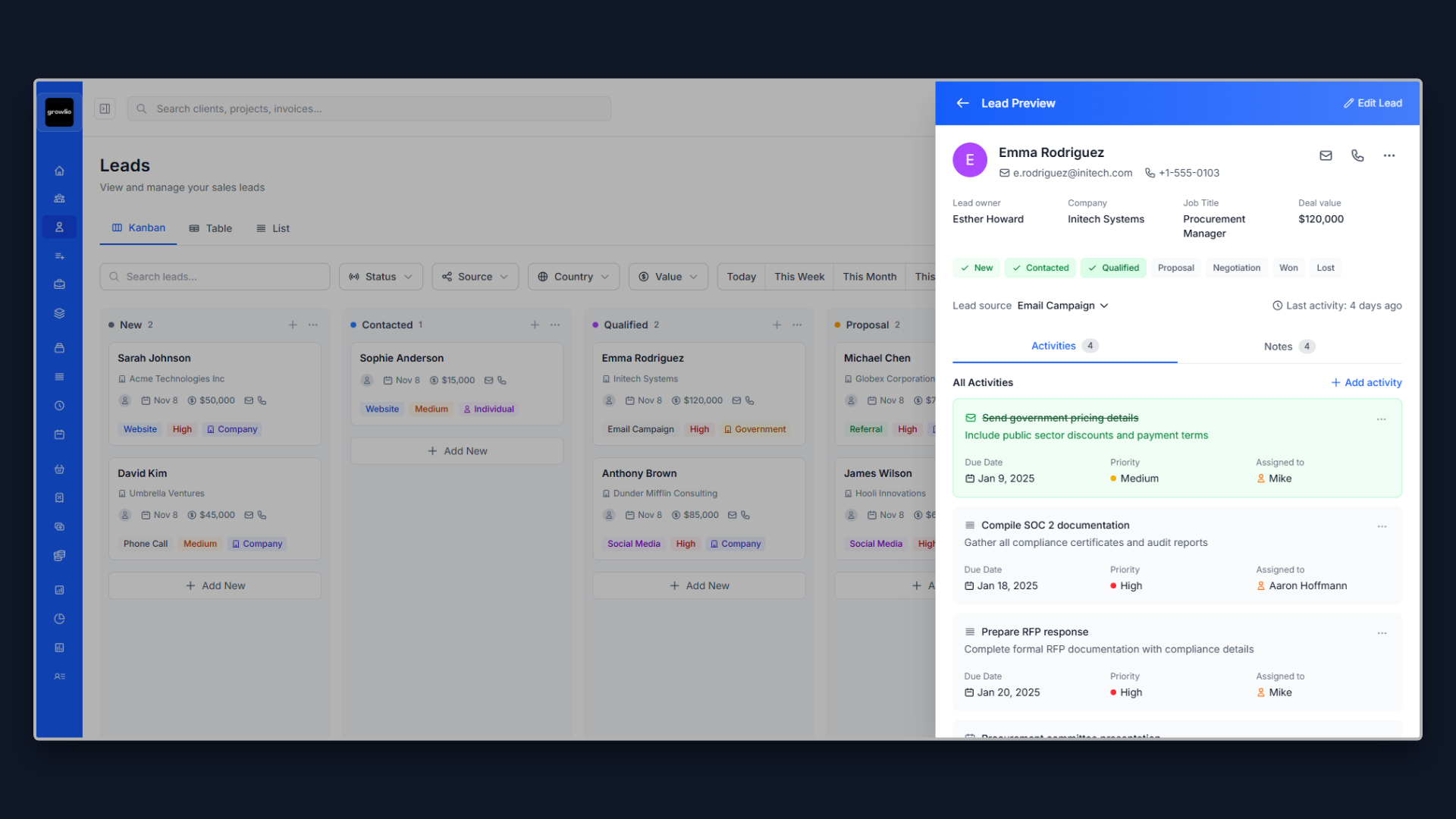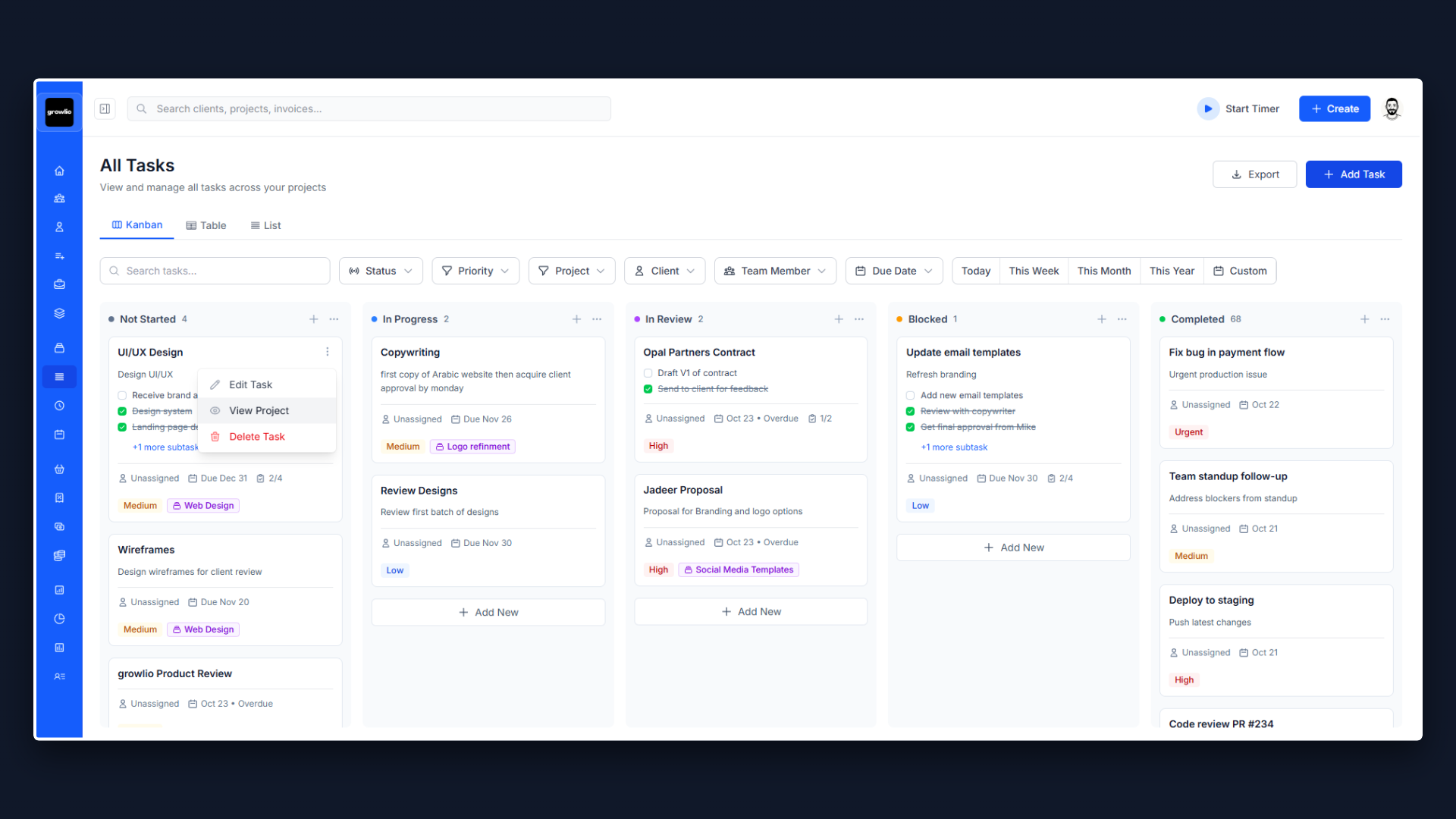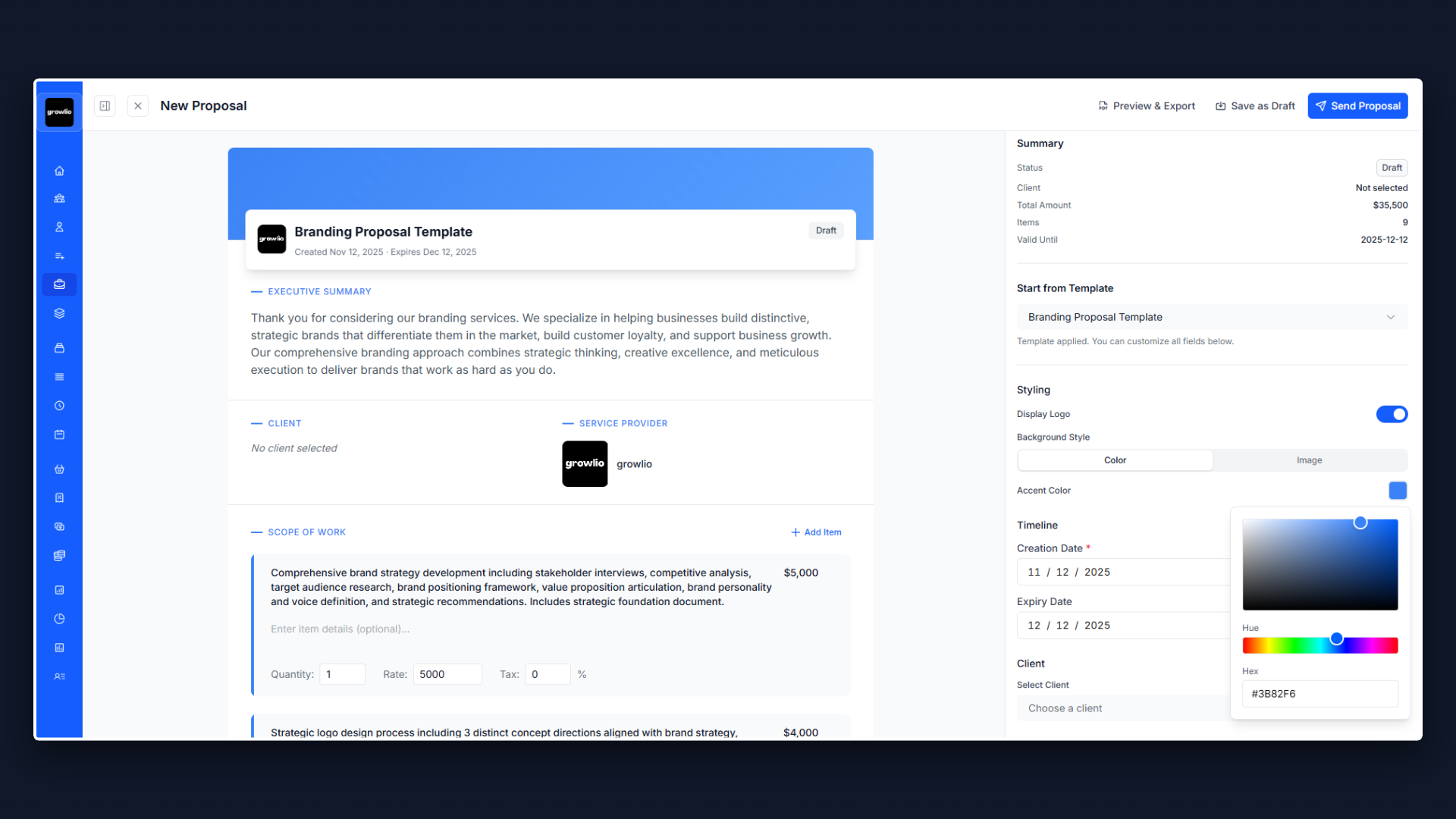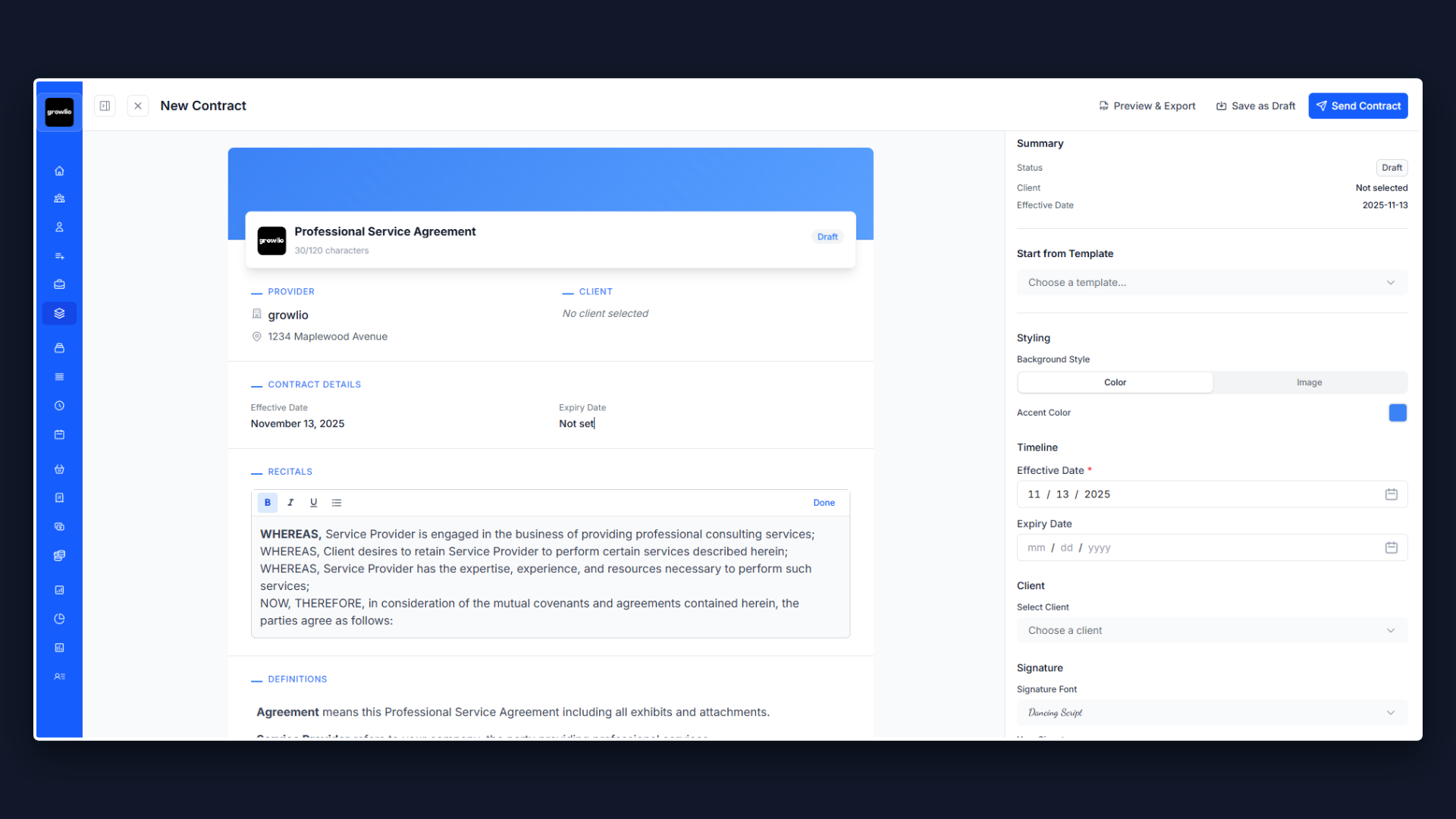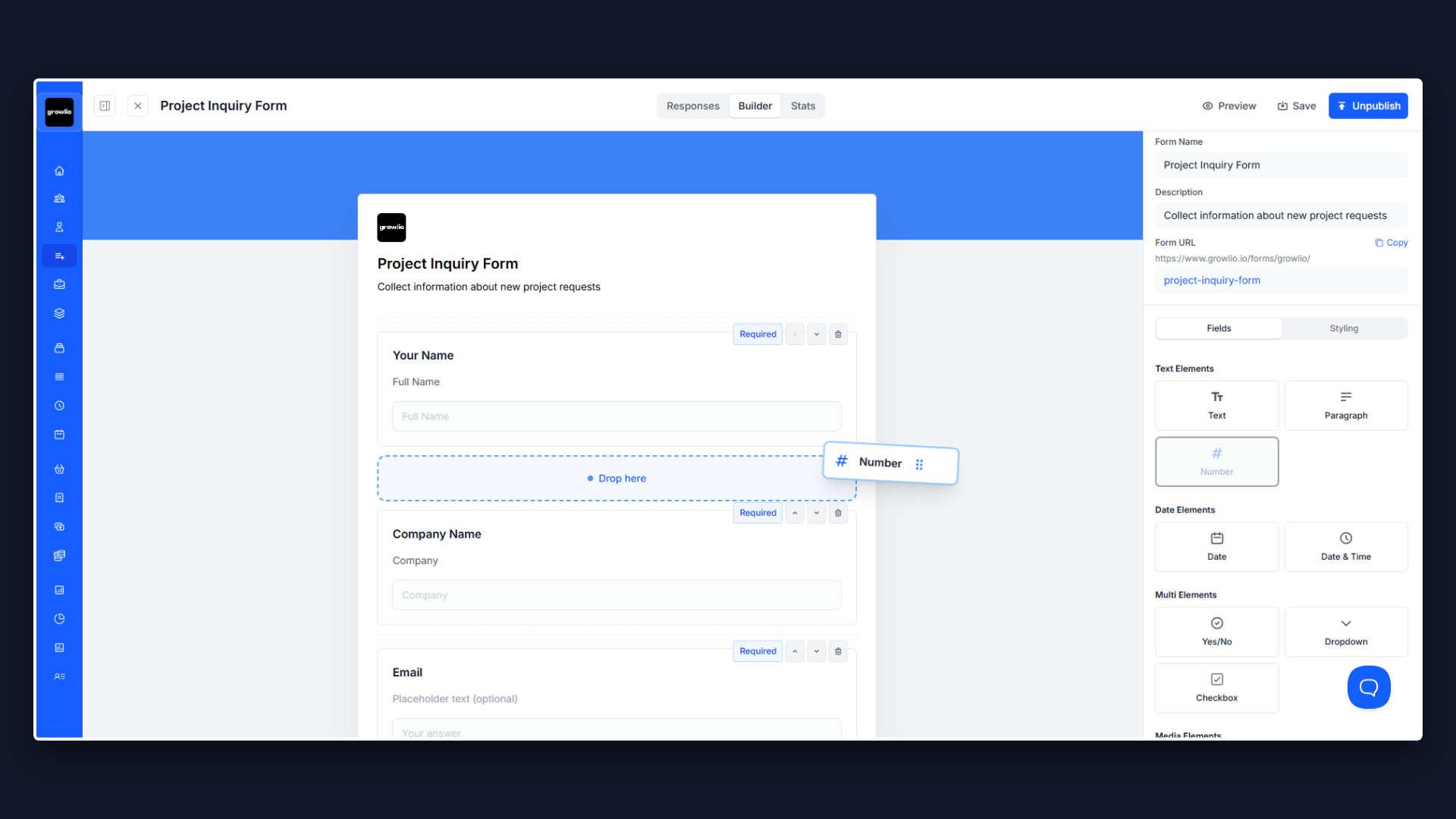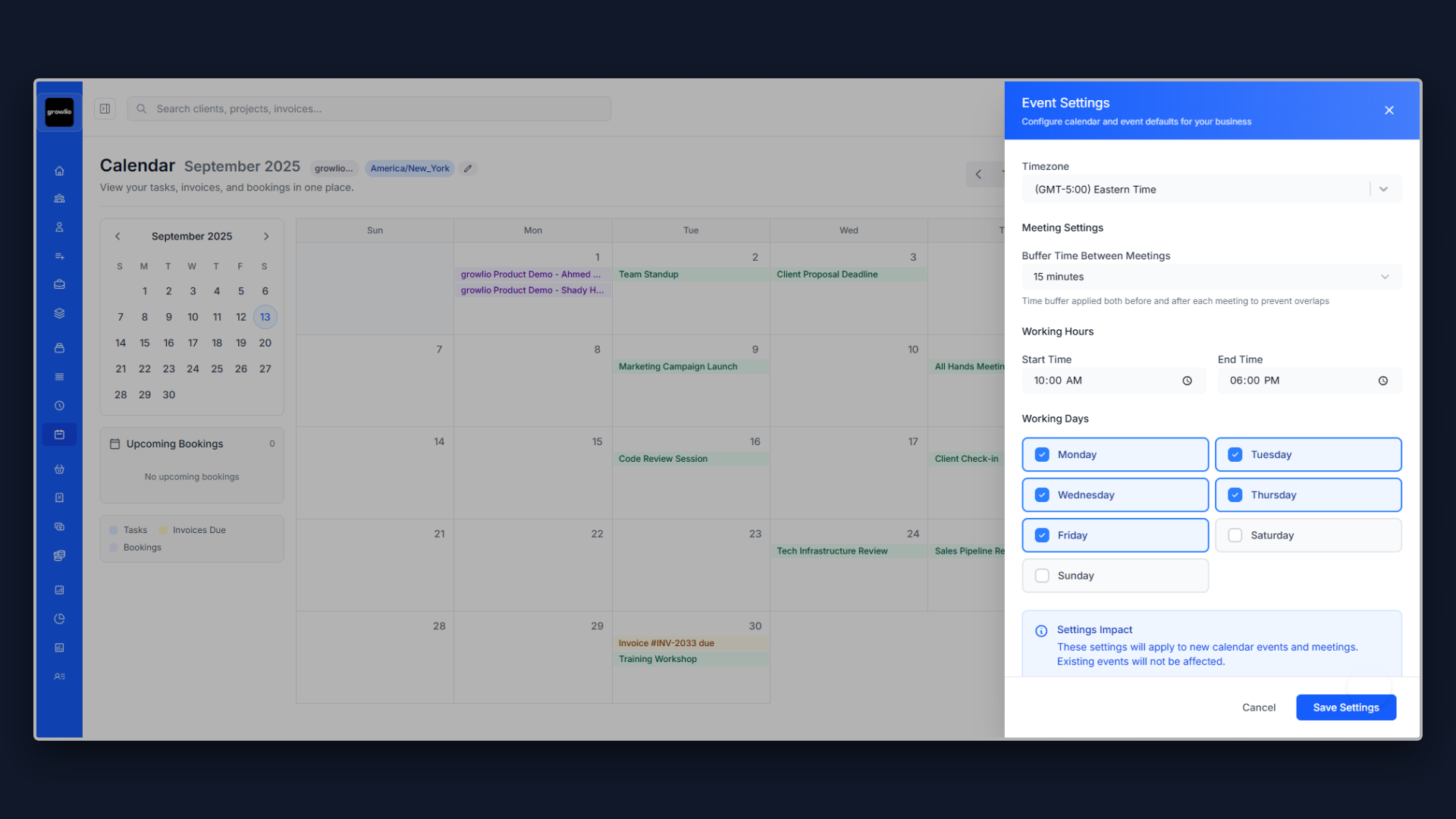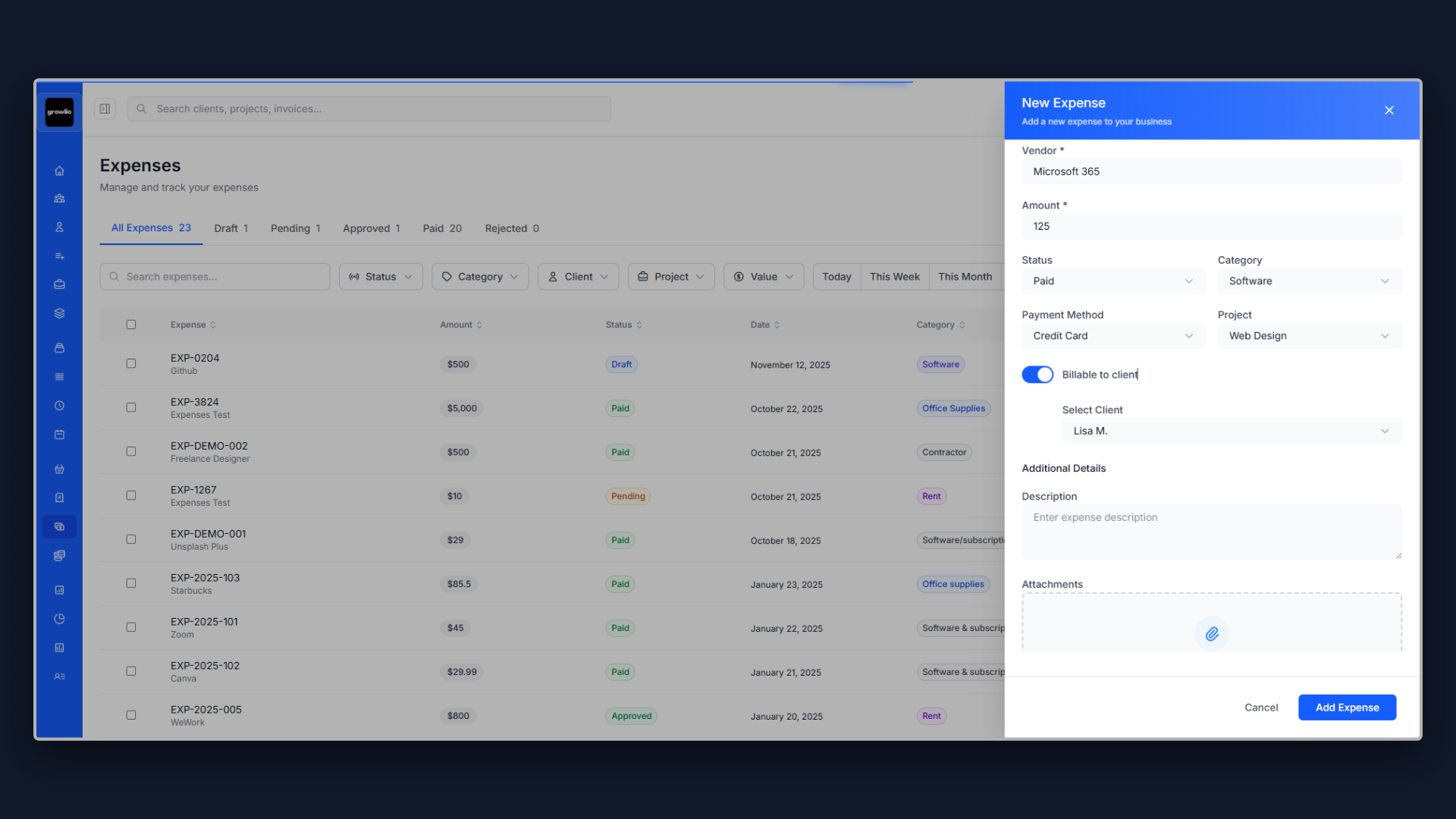Why Your Product Development Proposal Makes or Breaks Your Business
Here is what most product developers get wrong: they lead with technology stack, development methodology, and impressive portfolios. They talk about React, microservices, Agile sprints, and their years of experience before understanding whether the product idea is actually viable or solving a real problem.
The result? Proposals focused on building features instead of validating assumptions. Clients pay for six months of development only to launch products nobody wants. Beautiful code and slick interfaces that solve problems users do not have. And developers who wonder why their perfectly executed projects fail in the market.
A professional product development proposal does something different: it demonstrates you understand that building the product is the easy part, and validating you are building the right product is the hard part. It educates clients on lean methodology, MVP thinking, and why launching fast with minimal features beats building everything perfectly before getting user feedback.
This template gives you the exact framework to create proposals that win product development projects at profitable rates while setting realistic expectations about product-market fit validation from day one.
1. Start With Problem Validation, Not Solution Building
Before discussing features, technology, or development timelines, validate that the problem is real and worth solving. Are real users experiencing this pain point? How are they currently solving it? What are they willing to pay for a better solution? How big is the potential market?
Your proposal should demonstrate you understand the product landscape. Reference market research if available: size of target market, existing solutions and their limitations, user feedback on current alternatives, pricing expectations in the category, and defensibility of the proposed solution.
For example: "Our preliminary research shows 50,000+ small businesses currently using spreadsheets for inventory management because existing software is too complex or expensive. User interviews reveal they would pay $50-100/month for a simple, focused solution. However, before committing to full development, we recommend validating these assumptions through a landing page test and user interviews with 20-30 potential customers."
This approach immediately shows you prioritize building the right thing over just building things right.
2. Discovery and Product Strategy Foundation
Every successful product starts with proper discovery. Your proposal should position discovery as essential investment, not overhead that delays development.
Detail your discovery process: stakeholder interviews to align on vision, success metrics, and constraints, competitive analysis to understand market landscape and opportunities, user research to validate problems and current solutions, technical feasibility assessment to identify constraints early, business model exploration to ensure path to profitability, and go-to-market strategy considerations to plan for launch and growth.
Explain why discovery matters: building features users do not want wastes resources on wrong solutions, skipping market validation leads to products that fail regardless of quality, ignoring business model results in products that cannot sustain themselves, and launching without go-to-market strategy means nobody finds your product.
Set expectations: discovery may reveal the original idea needs pivoting, some features may prove unnecessary after user research, technical constraints may require solution adjustments, and market research may uncover unexpected opportunities or threats.
Position discovery as risk reduction that increases chances of product success.
3. MVP Strategy and Lean Product Development
Most product failures come from building too much before validating core assumptions. Your proposal should emphasize MVP (Minimum Viable Product) thinking.
Explain MVP philosophy: identifying the smallest feature set that delivers core value, validating critical assumptions before major investment, getting real user feedback as quickly as possible, learning from actual usage rather than hypothetical preferences, and iterating based on data rather than opinions.
Detail your MVP scoping process: identifying core user jobs to be done, defining must-have versus nice-to-have features, determining what can be tested without custom development, planning phased rollout of functionality, and establishing validation criteria for each phase.
Give concrete examples: "Rather than building all 15 planned features, we recommend launching with the 3 core features that solve the primary user problem. This allows us to validate product-market fit in 8 weeks instead of 6 months, at 30% of the cost. Once we confirm users find value in the core functionality, we can confidently invest in expanding features based on real user requests rather than assumptions."
Address common MVP concerns: MVP does not mean low quality or buggy, it means ruthlessly focused on core value, tested features work reliably even if feature set is limited, and user experience is polished for included features.
4. User Research and Validation Throughout
Great products are built through continuous user validation, not isolation. Your proposal should position user research as ongoing, not a one-time phase.
Outline validation approaches: problem validation through user interviews confirming pain points are real, solution validation through prototypes and mockups before building, usability testing on early versions to identify friction, beta testing with real users for actual usage feedback, analytics monitoring for behavioral insights post-launch, and ongoing user interviews to guide roadmap prioritization.
Explain validation cadence: weekly user testing during design phase, beta group engagement during development, instrumentation for usage analytics from day one, monthly user interviews after launch, and quarterly satisfaction surveys for trend tracking.
Set expectations about learning: user feedback will contradict initial assumptions, features you think are critical may prove unimportant, users will request unexpected functionality, and usage patterns will differ from predictions.
Position this uncertainty as positive: learning what users actually need prevents wasting resources on features nobody uses, early pivots are cheaper than late ones, and data-driven decisions beat opinion-based ones.
5. Product Roadmap and Feature Prioritization
Clients often want to build everything at once. Your proposal should educate them on strategic feature prioritization and phased development.
Detail your prioritization framework: identifying must-have features for MVP launch, prioritizing based on user value and development effort, sequencing features for logical user journey, balancing quick wins with long-term strategic features, and planning for technical debt management.
Explain common prioritization methods: MoSCoW (Must have, Should have, Could have, Will not have), RICE scoring (Reach, Impact, Confidence, Effort), Value vs Effort matrix, Kano model for user satisfaction, and user story mapping for journey-based planning.
Address roadmap flexibility: initial roadmap is hypothesis that will evolve, user feedback drives reprioritization, market changes require adaptation, and technical discoveries may alter feasibility or sequencing.
Set expectations: some requested features will be deferred or eliminated, roadmap changes based on learning are signs of success not failure, and saying no to features is as important as saying yes.
This demonstrates strategic product thinking, not just feature factory execution.
6. Technical Architecture and Scalability Planning
While avoiding premature optimization, your proposal should address technical foundation and scalability considerations appropriately for the product stage.
Discuss architecture approach: choosing tech stack based on team expertise and product needs, planning for current scale with flexibility for growth, identifying which components to build versus buy, integration architecture for third-party services, and data architecture for analytics and insights.
Address scalability pragmatically: for MVP, optimize for speed to market over massive scale, build on proven technologies rather than cutting edge, plan architecture that can scale but do not over-engineer for theoretical future, and identify which components would need rebuilding at scale.
Explain build versus buy decisions: using existing platforms for non-differentiating features (authentication, payments, email), custom building for unique value propositions, leveraging cloud services for infrastructure, and integrating best-of-breed tools rather than building everything.
Set realistic expectations: initial tech choices may need revisiting as product scales, some technical debt is acceptable for speed in early stages, and refactoring is normal part of product evolution.
This shows technical competence balanced with product pragmatism.
7. Design System and User Experience Foundation
Consistent, intuitive UX is critical for product success. Your proposal should address design foundations that enable both quality and velocity.
Detail design approach: user research informing design decisions, wireframing and prototyping before development, design system for consistency and efficiency, responsive design across devices, and accessibility compliance from the start.
Explain design system value: component library enables faster development, design patterns ensure consistency, documented standards help team scale, and reusable components reduce bugs and maintenance.
Address UX priorities: intuitive onboarding for new users, clear value proposition communication, minimal friction for core tasks, helpful error states and guidance, and delightful micro-interactions where they add value.
Set expectations about design iteration: initial designs will evolve based on user testing, some design decisions require usage data to validate, and continuous refinement improves conversion and satisfaction.
8. Development Process and Collaboration
How you build matters as much as what you build. Your proposal should outline development methodology and collaboration approach.
Describe your development process: Agile methodology with 2-week sprints, sprint planning with prioritized backlog, daily standups for team alignment, sprint demos for stakeholder visibility, retrospectives for continuous improvement, and continuous deployment for rapid iteration.
Detail collaboration tools and practices: project management platform (Jira, Linear, etc.), code repository and version control, design collaboration tools (Figma, etc.), communication channels (Slack, etc.), and documentation systems for product requirements and technical specs.
Set expectations for client involvement: product owner participation in sprint planning, timely feedback on demos and deliverables, availability for questions and clarifications, user recruitment assistance for testing, and decision-making on prioritization tradeoffs.
Address velocity and estimation: initial estimates will be refined as team learns, velocity improves as team gels and reduces unknowns, some features take longer than expected while others go faster, and learning about product needs is more valuable than hitting arbitrary deadlines.
9. Quality Assurance and Testing Strategy
Shipping fast should not mean shipping broken. Your proposal should outline QA approach that balances speed with quality.
Detail testing approach: automated unit testing for code reliability, integration testing for component interactions, end-to-end testing for critical user flows, manual exploratory testing for edge cases, performance testing for speed and scalability, and security testing for vulnerability protection.
Explain quality gates: code review for all changes, automated test suites must pass before merge, staging environment testing before production, and user acceptance testing for major features.
Address bug management: severity-based prioritization (critical, high, medium, low), SLA for critical bug fixes, planned bug fixing time in each sprint, and technical debt management to prevent accumulation.
Set expectations about bugs: some bugs will escape to production despite best efforts, user-reported issues provide valuable feedback, quick response matters more than perfection, and continuous improvement reduces bug rates over time.
10. Launch Strategy and Go-to-Market Planning
Building a great product is only half the battle. Your proposal should address launch strategy and initial user acquisition.
Detail launch approach: soft launch to small user group for validation, beta program for early adopters and feedback, staged rollout to manage risk and learn, public launch with coordinated marketing, and post-launch monitoring for issues and opportunities.
Discuss go-to-market considerations: target customer identification and segmentation, positioning and messaging development, pricing strategy and validation, distribution channel selection, early adopter acquisition tactics, and content and SEO foundation.
Address marketing and analytics setup: analytics instrumentation for user behavior tracking, conversion funnel measurement, customer acquisition cost tracking, retention cohort analysis, and A/B testing infrastructure for optimization.
Set realistic expectations: early user acquisition will be slow and manual, word-of-mouth growth takes time to compound, paid acquisition may be required to accelerate growth, and product-market fit validation comes before growth scaling.
Be clear about what you provide (product and analytics setup) versus what client needs to handle (marketing execution, sales, customer success).
11. Post-Launch Iteration and Product Evolution
Launch is the beginning, not the end. Your proposal should address post-launch learning and iteration.
Detail post-launch activities: monitoring analytics for usage patterns and drop-off points, gathering user feedback through interviews and surveys, identifying bugs and user experience issues, prioritizing improvements based on impact and effort, and shipping continuous improvements weekly or biweekly.
Explain iteration approach: weekly or biweekly releases for continuous value delivery, A/B testing for data-driven decisions, feature flagging for controlled rollouts, user cohort analysis for retention improvement, and roadmap adjustments based on real usage and feedback.
Address feature requests: users will request many features, some requests indicate real needs while others are edge cases, prioritization based on usage data and business goals, and saying no to features that do not serve core value proposition.
Set expectations: product-market fit may take multiple iterations to achieve, some initial features will prove unnecessary and get removed, unexpected features will become critical based on user behavior, and successful products evolve continuously based on user needs.
12. Success Metrics and Product-Market Fit Validation
Product success must be measurable. Your proposal should establish clear metrics and validation criteria.
Define product metrics you will track: activation rate (new users completing core action), engagement rate (active usage frequency), retention rate (users returning over time), referral rate (organic growth through sharing), revenue metrics (MRR, LTV, CAC), NPS or satisfaction scores, feature adoption rates, and time to value (how quickly users get benefit).
Explain product-market fit indicators: strong retention (40%+ of users active after 90 days), organic growth through referrals, users expressing disappointment if product disappeared, willingness to pay or increasing payment, and predictable customer acquisition and lifetime value.
Set realistic benchmarks: product-market fit typically takes 6-18 months to achieve, early metrics will be volatile with small user counts, some metrics (retention) matter more than others (vanity metrics like signups), and achieving one milestone enables focus on next stage.
Connect product metrics to business outcomes: showing how retention drives sustainable growth, engagement indicates product value, referrals reduce customer acquisition cost, and product-market fit enables confident scaling investment.
Position yourself as partner in achieving product success, not just building to specification.
